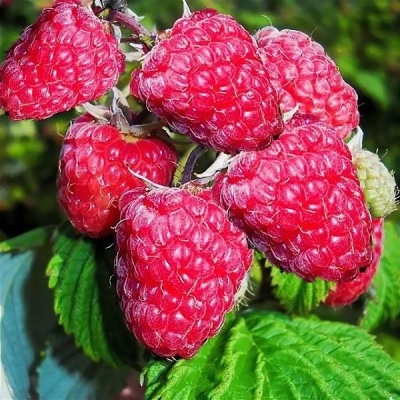
- Authors: VSTISP, prof. V.V. Kichina
- Repairability: No
- Berry color: red
- Taste: dessert, sweet with mild acid
- Ripening period: late
- Berry weight, g: 4-8 g
- Yield: 4 kg per bush
- Frost resistance: winter hardy, up to -30 ° C
- Fruiting period: from mid-July to August 1
- Watering: moderate
Raspberry Stolichnaya, also known by the alternative name M-143, definitely deserved the attention of gardeners. It is one of the most popular varieties in its niche. It harmoniously combines the absence of thorns with the ripening of a large number of large berries.
Breeding history of the variety
Developed a plant at VSTISP. The main selection work was carried out until 1981 by the famous breeder Kichina. The variety appeared in the public domain in 1984, and immediately made a splash. Gardeners quickly recognized its main advantages over previously common varieties. It's time to tell about the peculiarities of culture in more detail.
Description of the variety
Ripening terms
It will be too late to ripen the harvest. Remontantnaya Stolichnaya will provide gardeners with 4-5 fees per season. Most often, under normal conditions, it is possible to pick berries from mid-July to the first days of August. Such characteristics allow us to close the gap, that is, the period of the season when few other varieties still (or already) produce berries. In addition, the relatively late ripeness largely insures against the return of cold weather.
Yield
One Stolichnaya bush can grow up to 4 kg of fruits. This is enough to grow berries for sale on a small farm. But for large plantations, this level is already little acceptable. Importantly, the transportability of the crop is quite high. This further expands the prospects for its marketing.
Berries and their taste
The fruits are colored classic red. They resemble an oblong cone in shape. The mass of large berries ranges from 4 to 8 g, and individual ones - up to 20 g. It consists of dense, juicy pulp. The taste is described as dessert, a slightly perceptible sourness is noted, the aroma is also at a very decent level.

Growing features
Site selection and soil preparation
In order for Stolichnaya to give a good harvest, you need:
pick up a decently lit area;
loosen the soil and take care of its fertility;
neutralize acidity;
supply the planting of each bush with 10-20 kg of humus or decomposed manure per 1 sq. m;
prepare pits or trenches 30-40 cm deep;
water the treated area thoroughly immediately after planting.


Pruning
Leaving the raspberry with pruning shears is very important to maintain a stable yield.You will have to cut out all the shoots that have stopped bearing fruit. Gardeners have a choice - to do it immediately after the end of the growing season, or in the final preparation for winter. The growth of the new year is recommended to be shortened by 10-15 cm in the last May decade. Then you can activate the release of new fruit shoots.

Watering and feeding
Capital is a moisture-loving culture. However, excessive irrigation is contraindicated for her. Two waterings a week against the background of the formation of ovaries and the strengthening of the fruits will be quite enough. Only in hot periods will it be necessary to irrigate the raspberry plant more often. Watering is carried out at the root.
With proper planting in the first 24 months, additional feeding is not required. When this period expires, once a year it is necessary to introduce a mineral-organic complex. High nitrogen consumption makes urea feed actual. In the autumn months, it is advisable to focus on superphosphate and potassium salt. As soon as the raspberry shoots rise to 2 m, nitrogen additions must be stopped immediately.
For each year they use:
or 15 kg of matured manure;
or 20 kg of compost;
or 20 kg of peat.


Frost resistance and preparation for winter
The plant's resistance to cold is quite high. It is noted that in case of frost down to -30 degrees, additional protection measures are not needed. Therefore, in most of the territory of Russia, in the middle lane, shelters are needed only in the most severe winters. However, reinsurance in gardening has never been superfluous.

Diseases and pests
Raspberry Stolichnaya can be affected by verticillium and purple spotting. Susceptibility to these ailments is no higher than that of most simple garden varieties. Anthracnose sensitivity is very low. The risk of spider mite infestation is also negligible. Other diseases and pests do not pose a threat to this variety at all.

Unfortunately, raspberries, like other plants, do not bypass various diseases and pests. Only armed with the knowledge and the necessary means for this, you can cope with such troubles. To help the plant, it is very important to be able to recognize the disease in time and begin timely treatment.
Reproduction
To breed Stolichnaya, you need to wait for spring - the necessary conditions are created in March. Due to the limited number of shoots and root suckers, they most often simply divide the bush into parts. Each segment should contain at least 2-3 shoots, otherwise the survival rate will be low. The stems are shortened to 0.3 m, achieving the maximum redirection of forces for rooting.You can wait for fruiting next season.








































































